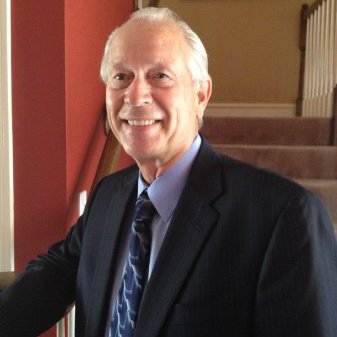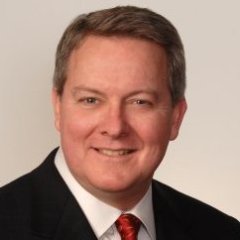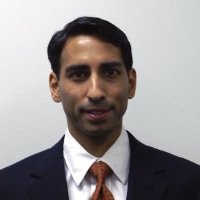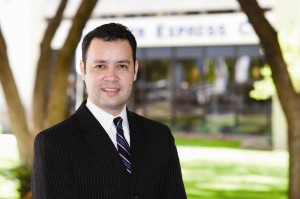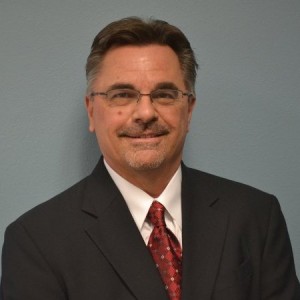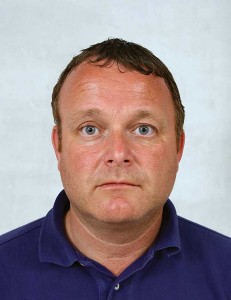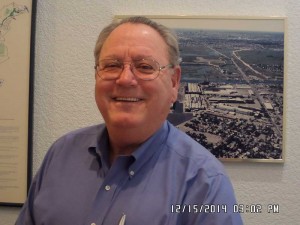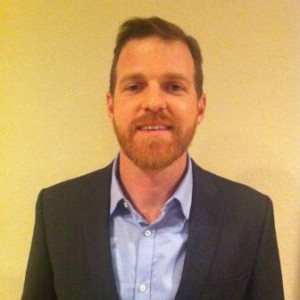A bigger, better, more experience-packed expo awaits oil and gas industry professionals this April 14th, as the Midland Energy Expo follows its sold-out 2014 event with an expanded program for 2015.
Besides the brand-new venue—the just-opened Midland Horseshoe Pavillion, next door to last year’s venue in the Horseshow Arena—there is a full roster of speaker presentations that brings together top experts in various fields.
Organizers have opted for an “Administrative Track” and a “Technology Track,” to run simultaneously during the one-day unfolding of the show. For easy reference, we have charted all the topics, experts, and times. Be sure to pre-register for the events of your choosing by calling (325) 673-4822 x 121 or by visiting midlandenergyexpo.com.
Administrative Track
Motivating and Retaining Employees
Dr. William Price, University of Texas of the Permian Basin
8:30 – 9:20
Dr. Bill Price is Dean of the College of Business and Engineering at the University of Texas of the Permian Basin. His first teaching position was as an assistant professor of business at Howard Payne University. He subsequently progressed to the University of Texas of the Permian Basin, where he became an associate professor and associate dean, serving in those capacities for several years. He instructed a variety of management courses for undergraduate and graduate students. Dr. Price received his D.B.A. in management from Nova Southeastern University in 2001 and his MBA from Gonzaga University. For his BBA in marketing, he attended University of New Mexico and Eastern New Mexico University. He is a former member of Delta Sigma Pi business fraternity and Sigma Phi Epsilon social fraternity.
He has published 20 articles and columns related to business strategic management and human resource management and made 18 presentations at academic conferences. Price’s service to the profession includes serving as a reviewer for dozens of manuscripts at academic journals, and he has served on the program committees for major academic conferences. He served on the board of directors of American Airpower Heritage Museum, Permian Basin SHRM, and Abilene Civic Center as well as active involvement in several other charities. Dr. Price also writes the HRIQ column that appears monthly in this magazine.
Mergers and Acquisitions: Preparing for Change
Bryan Livingston and Paul Puri, Capital Alliance
9:30 – 10:20
Bryan K. Livingston is executive vice president and principal of Capital Alliance Corporation. He is also the Global Leader of the M&A International, Inc. Construction and Engineering Services industry group. Bryan has ongoing projects in the fields of civil engineering applied to telecommunications structures, heavy civil construction and engineering, energy infrastructure construction and engineering, electrical transmission & distribution, aerospace manufacturing, environmental engineering and remediation services, and deregulated energy retail sales. His primary responsibility at Capital Alliance is providing mergers and acquisitions advisory services to the shareholders of middle market companies, with an emphasis on construction and engineering services providers throughout North America. He has completed transactions for oil and gas pipeline construction, oil and gas pipeline support services, utility scale electrical construction, mechanical and plumbing construction, industrial automation manufacturing services, and minerals mining and processing clients.
Paul Puri is executive vice president and principal of Capital Alliance Corporation in Dallas, Texas. He is also Global Head of M&A International Inc.’s Energy Industry Group, a multinational group of energy investment bankers located in 41 countries. He has over 10 years of experience advising clients in complex M&A transactions that demand his critical analysis and guidance, deep industry relationships, strong negotiating skills, and tenacity to exceed shareholder objectives. He has initiated and closed several substantial and game-changing transactions on behalf of clients that specialize in oilfield pipes, valves, and fittings (PVF) and hydraulic fracturing equipment.
Allocation Wells and What Makes Them Different
Angela Staples, PBPA General Counsel
12:30 – 1:20
Angela Staples moved to Midland in 2003, after graduating from the University of Texas at Austin School of Law. She has focused her practice on oil and gas matters, and is admitted to both the Texas and New Mexico bars, and is board certified in Oil, Gas, and Mineral Law by the Texas Board of Legal Specialization. Prior to moving to Tall City Exploration, LLC, as vice president of land and legal, she practiced oil, gas, and mineral law privately. \ Angela currently serves as the general counsel to the Permian Basin Petroleum Association, and authors monthly articles for its magazine—this magazine—Permian Basin Oil and Gas, articles which typically consist of recent case law review and analysis that relates to the oil and gas industry.
Operators can, for now, get permits for horizontal allocation wells without getting consent of all mineral interest owners. The growth of horizontal drilling has been a factor in the new rules. While once it was necessary for operators to get sign-offs from all lessors if the operator wanted to pool leases to unitize it for drilling a well that extends across multiple tracts, that’s no longer the case. What does this mean for royalty owners? For operators? It’s a new world for both.
How Businesses Can Access Capital
Enrique Romero, UTPB SBDC
1:30 – 2:20
Enrique is a life-long resident of Odessa and brings over 20 years of diversified experience in retail, construction, oil and gas, international business, insurance, marketing, business consulting, and banking, which collectively has made him an effective and invaluable resource for UTPB Small Business Development Center clients. He has worked in the banking and lending industry for over seven years as a vice-president and client manager, and has specialized in commercial lending for middle-market companies.
Being an entrepreneur himself, currently managing three start-up companies and having owned and operated two businesses for five years prior to continuing his banking career, Enrique understands the needs of the small business community and realizes the importance of programs being offered. Enrique dedicates time to the Small Business Development Center, providing consulting services to entrepreneurs.
Enrique has a Bachelor of Business degree from Northwood University with majors in Marketing/Management, International Business, and Accounting. Enrique has served on numerous volunteer leadership positions in a variety of community organizations.
This session covers the basics on how to obtain business loans. Information will be provided on a variety of funding alternatives, including government-backed loans (SBA loans), equipments loans, working capital loans, factoring lines (similar to a line of credit), and more.
Technology Track
Accident Investigation
Matt Kerr, UTA OSHA Training Institute Education Center
8:30 – 9:20
As director of The University of Texas at Arlington OSHA Training Institute Education Center and as someone with over 30 years of experience in the safety, health, and environmental fields, Matthew Kerr has developed, delivered, and managed environmental, occupational health, and occupational safety education and training programs and safety and health plans/programs for organizations in both the public and private sectors. Matt’s career has included 10 years in Fire/Rescue/HazMat, 10 years of hazardous materials/waste management/emergency response/site remediation, 20 years in volunteer search and rescue, and 20 years as lead consultant/instructor and principal of a training and consulting company. Additionally, Matt has served U.T. Arlington’s OSHA Education Center as an adjunct instructor of OSHA-numbered and other courses, and as chair and lead instructor of the Disaster Response Certification Program and the Maritime Standards and Trainer Program.
This training provides an introduction to accident investigation procedures and describes accident analysis techniques. The goal is to brief participants on basic skills necessary to conduct an effective investigation of a workplace accident.
Bridging the Gap in Flow Management
Mike Brunton, Halliburton
9:30 – 10:20
Mike Brunton started his career in 1992 as an operations assistant working on various offshore platforms in the UK and Norwegian sector of the North Sea. Mike joined Halliburton’s well test department in 1996 and progressed through the department to service leader for surface well testing systems. He then moved to the Multiphase flow meter product line in 2001, where he field commissioned the first system for Halliburton. In 2002 he was responsible for the successful deployments of MPFM technology and personnel in the Global market. Most recent, in his current role he is responsible for the management and evaluations of MPFM applications by project basis providing technical expertise as the subject matter expert globally to MPFM projects.
Session description: The need for multiphase flow measurement in the oil and gas production industry has been evident for many years. A number of such meters have been developed since the early 1980s by research organizations, meter manufacturers, and oil and gas production companies. Different technologies and various combinations of technologies have been employed, and prototypes have been quite dissimilar in design and function. Some lines of development have been abandoned, while a number of meters have become commercially available and operating successfully in the industry.
Traditionally, the flow rates of well fluids have been measured by separating the phases, utilizing separation equipment and measuring the outputs of the separated fluids by conventional single-phase techniques, e.g., orifice plates for gas and turbine meters for oil. Test Separators sometimes prevent complete separation of the fluid phases and require frequent maintenance and calibration etc… If the system is not maintained, these conditions cause errors in separator instruments, which are designed to measure streams of single phase gas, oil, or water. Moreover, obtaining reliable measurements from test separators requires relatively stable conditions, which can take much time. Therefore, it is highly attractive to have a relatively simple suitable instrument, called a multiphase flow meter, which is capable of measuring the flow rate of each component directly, without separation in all conditions.
Storm Water Pollution in Flow Measurement
Mike James, James Environmental Management, Inc.
12:30 – 1:20
Raised in the Permian Basin as an El Paso “natural gas brat” (his words), Mike James, “The Environmental Guy,” has 40 years’ experience with facilities and maintenance management, construction management, and environmental and safety compliance management in the electric utility industry as well as at Texas Instruments and General Electric in heavy manufacturing facilities. He has successfully developed and implemented Multi-media Environmental Compliance Assurance Programs for many manufacturing facilities across the country. Mike is a frequent speaker and advocate on behalf of industry at meetings of state associations and other industry-related gatherings. His credentials include an MS in Civil and Environmental Engineering from Tufts University, an MBA from Eastern New Mexico University, and a BS in Electrical Engineering from New Mexico State University, along with completion of Media Relations training and Environmental Dispute Resolution at MIT.
What has been happening in Odessa, the Permian Basin, and Texas with all this environmental and storm water stuff? Is it real? Does it apply to any other places you might work? What can we do in the short term and long term to deal with it? The presentation Mike James will be bringing addresses aspects of environmental compliance, storm water pollution prevention plans and permits, inspecting your facility, and preparing for inspection by a regulatory agency. It also explains how to obtain a permit if you don’t have one and talks about some of the regulations that determine what paperwork needs to be maintained at your facility. He will discuss the needs of an SPCC and how it interacts with your SWPPP in addition to touching on the storm water compliance needs of other regions of the country where you might be operating.
Gas Life Optimization and Troubleshooting
Matt Young, Flowco Solutions
1:30 – 2:20
Matt Young is the technical sales manager for Flowco Production Solutions. After graduating from Texas A&M, he started his career with BJ Services as a field engineer in the cementing division in Hobbs, N.M. After leaving BJ Services, he joined International Lift Systems (ILS) as a Field Service Technician, for the gas lift and plunger lift product line, working there for three years before ILS was acquired by Lufkin Industries. During the Lufkin/ILS acquisition he moved into the role of Mid-Continent Operations manager, handling gas lift and plunger lift technical support and installation. He was promoted into the North American Operations and Sales Manager role with Lufkin and continued in that position through the GE Oil and Gas acquisition. After a year with GE, he left to join Flowco. Matt has worked on gas lift and plunger lift installs and optimization projects throughout Texas, New Mexico, Oklahoma, Colorado, and Louisiana oil and gas fields. Working a brief stint in Canada and MENA with various technical and sales positions.
Session description: Maximizing artificial lift value is an important but often difficult task to complete for oil and gas operators. Optimizing well production through the use of gas lift on a well-by-well basis is a way to improve field output, but this approach can be limited by constraints from other wells and facilities. There are many ways to look at gas lift optimization—ways which can include troubleshooting and entire production system evaluation. Depending on the approach, many constraints can be identified and eliminated. This presentation will discuss the gas lift optimization, troubleshooting of a gas lift system, and other potential solutions.










